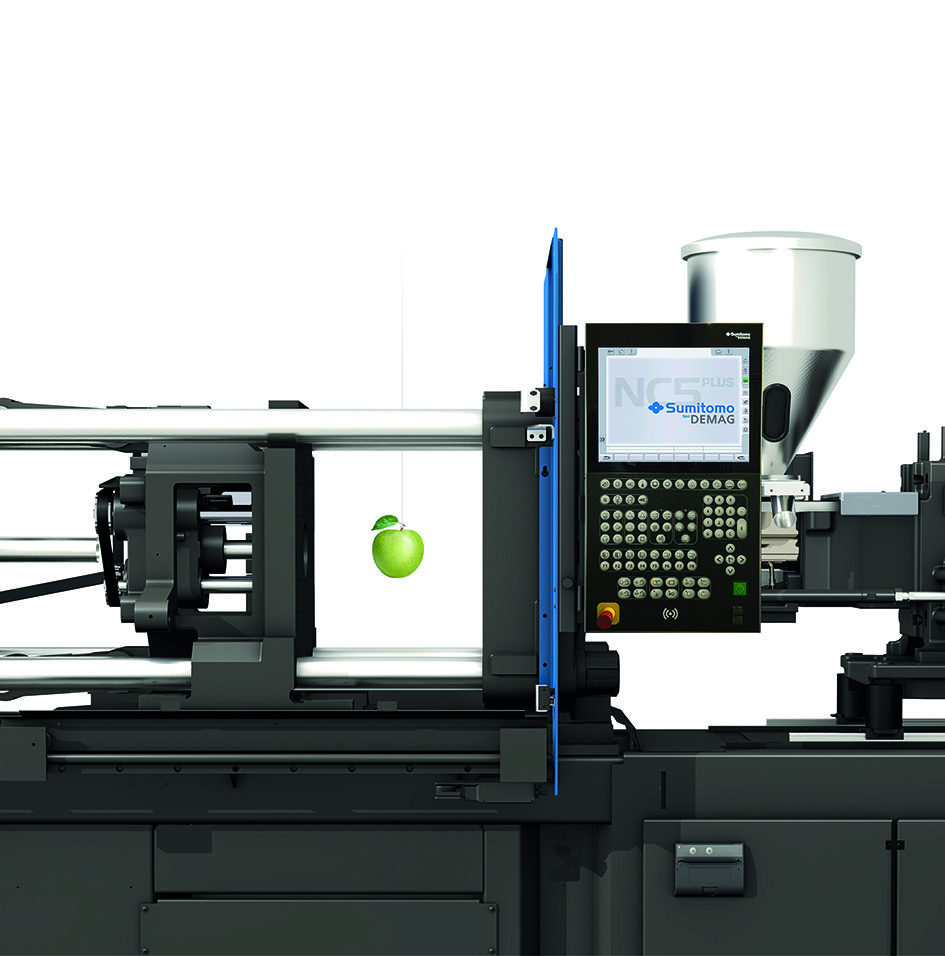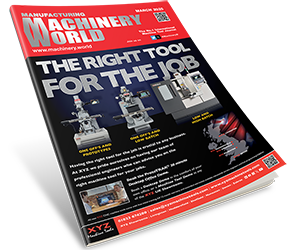Given that some high-end multi-cavity automotive and medical part moulds can exceed half a million pounds, mould tooling doesn’t come cheap. In fact, some cost more than the injection moulding machine itself! A trusted safety system to prevent causing irreparable damage to these sensitive tools is on every moulders’ wish list.
Safety of the mould can be compromised if components do not eject properly, if a foreign object enters the mould in production during the closing and opening sequence and when too much clamp force is applied.
Very often, mould protection doesn’t receive the attention warranted. In part, this can be due to the complexity of setting up the system, which requires a certain skill level, particularly with regard to understanding clamp forces. Additionally, few injection moulding suppliers offer active mould safety solutions that can sense and react instantaneously to an obstruction.
Sumitomo (SHI) Demag provides customers with a range of options, catering for the very latest hi-tech all-electric machines right through to hydraulic machines, and everything in between.
Typically, machinery suppliers use motor torque or tie bar loading measurements to gauge the mould status on electric machines. Sumitomo (SHI) Demag remains the only known company to offer a mould safety system featuring high resolution sensors built into the toggle system itself, claims UK Managing Director Nigel Flowers. These sensors are positioned close to the point where force is applied and links to the NC5 machine control panel, detecting and transmitting changes in the force signature during the mould closing sequence.
part of the company’s active range, the sensor safety system – known as activeProtect – is available as standard and can be retrofitted to machines featuring dynamic servo drives. This includes the company’s all-electric IntElect models and fast-cycling El-Exis SP range.
On top of safety
On these machines, the high-resolution sensor is located on the first link directly behind the moving clamping platen on the offside. The benefit of positioning the sensor close to the point of force application is even the smallest tensile or compression strains are measured. It means that any condition that may result in the set mould safety force being exceeded is instantly addressed.
Nigel explains: “The signal produced by activeProtect is so accurate it can detect even the slightest change in force patterns. Force values are converted in the transducer into a 0 to 10-volt signal, which is immediately transmitted to the machine’s NC5 operating control system. At this point, the real values of closing force, piston speed and stroke are compared with the master calculations, enabling the machine to react and stop before the mould faces touch. It’s like a chain reaction, with the entire mould safety decision and response taking place in less than 10 milliseconds.”
For added mould protection, activeProtect has now been extended to monitor the opening strokes. This helps to ensure mechanical mould elements, for example unscrewing devices, are protected from damage.
Other technology available
Additionally, users of the IntElect machines can be benefit from enhanced ejector control technology. Sumitomo (SHI) Demag’s latest advancement – Synchronized Ejector Operation – ensures that components are clear of the mould before it closes again. As well as preventing falling parts being crushed, it helps to mitigate damage to expensive mould tools.
“In an ideal world the parts are ejected with zero inertia and drop in a central line out of the mould space. It isn’t so much of a challenge for users of hydraulic machines, as plastic parts flow out of the mould in a cascade-like waterfall. In all-electric machines, this constant stream can be difficult to replicate. That’s because when the toggle clamp operates faster than the ejector mechanism, there’s less control over how and where the moulded components will fall,” explains Nigel.
Through the application of this technology, which enables synchronous operation of mould and ejector, the ejector speed is adapted to the master mould speed. If the mould speed is slowed down, the ejector is prohibited from moving closer than 20mm towards the mould.
Thermal imaging is another technique that can be used to control the optimum point to eject parts from the mould. It can also help to ensure that the mould is clear of components prior to mould closing. Attached to the fixed platen on the machine, this infrared technology uses heat to determine if parts have been ejected from the cavities.
The benefit for many is thermal imaging provides users of hybrid and hydraulic machines with a safety solution. “Compared to vision systems, thermal imaging is approximately a third of the investment cost. Additionally, thermal imaging can also be used to monitor the temperature of parts, and document important production parameters,” notes Nigel.
Help for hydraulics
For the large volume of moulders still using hydraulic-only machinery, safety systems are conventional and more limited. “Should an event happen within a mould in a hydraulic machine, the closing phase will continue, albeit at a slower speed, pushing gently in the hope it will come to a standstill before any permanent damage from the obstruction is done to the mould,” emphasises Nigel.
“Setting these safety parameters is reliant on machine operators having the skills and finesse to identify the region in the closing stroke where the mould is most at risk,” adds Nigel. Typically, this is just before the two mould faces touch. Operators then set a slower speed and force based on the hydraulic pressure level. Getting it wrong can lead to increased cycle times and consequently lower output.
The passive nature of this safety system is its biggest drawback. It relies on an operative incrementally converting the toggle system characteristics and cylinder diameter to the hydraulic pressure to determine the most likely collision point. If, as the clamping proceeds, this pressure level is exceeded, the system pressure relief valve opens and the mould stops.
Additionally, the safety system has to account for and overcome the mechanical resistance of the mould (cheeks and slides etc.). This often requires increased closing force, which again can damage the mould.
A slightly more sophisticated safety option was introduced with second generation machines. Featuring toggle clamping technology and more powerful control systems, machines were able to calculate the mould position from the crosshead position by storing a model of the toggle system in the control. With this system, a consistent force is accomplished by adjusting the pressure according to how close together the platens are.
“Given that a well maintained precision mould running 10-second cycles should have a lifespan exceeding 10 million cycles over five years, let alone the price tag these tools command, it’s worth giving your mould safety system the attention it warrants,” ends Nigel.







